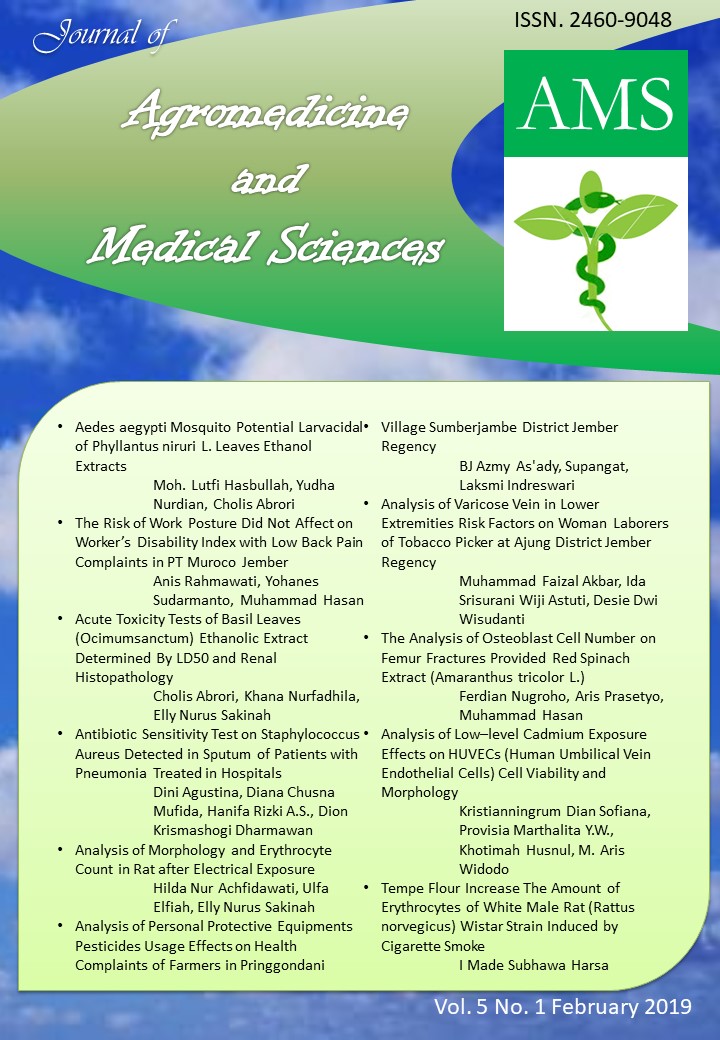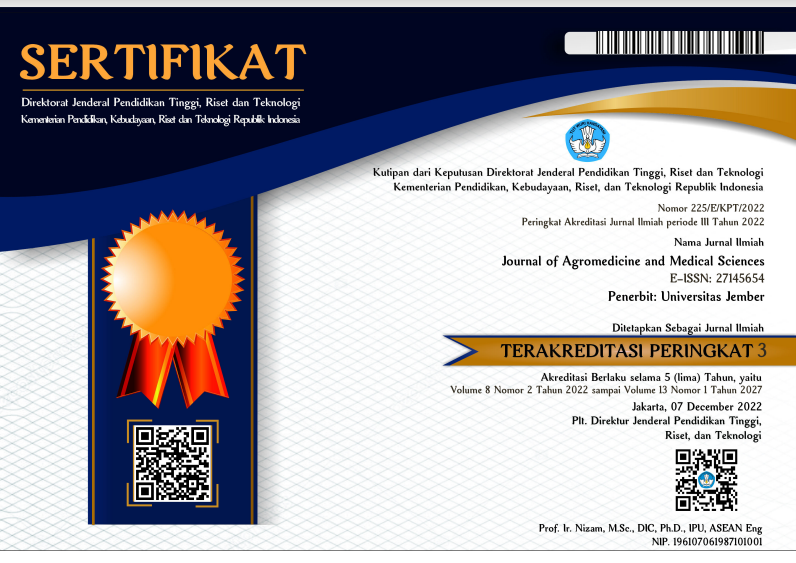Analysis of Morphology and Erythrocyte Count in Rat after Electrical Exposure
DOI:
https://doi.org/10.19184/ams.v5i1.6806Abstract
Electrical burns cause high mortality and morbidity and various complications, although the incidence is only 4% of all burns. Joule heating phenomenon occurs in electric burn patients which cause changes in erythrocyte morphology resulting hypercoagulability that contribute to the formation of thrombus. Changes in erythrocyte morphology may cause tissue oxygenation disorders and decrease in erythrocyte count leading to hypoxia. Until now there have been no reports of changes in erythrocyte morphology and reduction in the number of erythrocytes in burn patients due to electricity. This study aims to observe and analyze morphological and erythrocyte count in rats after electrical exposure of 140 V for 17 seconds. This is a true experimental laboratories study with post-test only control group design. The sample used were 24 rats consisting of one control group (K) and five treatment groups (P). Treatment groups were distinguished by days of blood sampling that is days 0 (P1), 3 (P2), 7 (P3), 10 (P4), and 14 (P5) post electrical exposure of 140 V for 17 seconds. Assessment in erythrocyte morphology was performed using giemsa staining that observed with 1000x magnification while erythrocyte count was performed using improved neubauer counting chamber. One Way Anova showed that there was no significant change in rats erythrocyte count after electrical exposure of 140 V for 17 seconds (p = 0.110). Descriptive analysis showed that there is morphological changes in erythrocyte morphology after electrical exposure of 140 V for 17 seconds, in terms of shape there are more fragmentosit, microsite, tear drops, stomatocytes, and cell target, in terms of size there are more microsite, and in terms of color there are more hypochromic erythrocytes.
Keywords: Burn Injury, Erythrocyte Morphology, Erythrocyte Count























